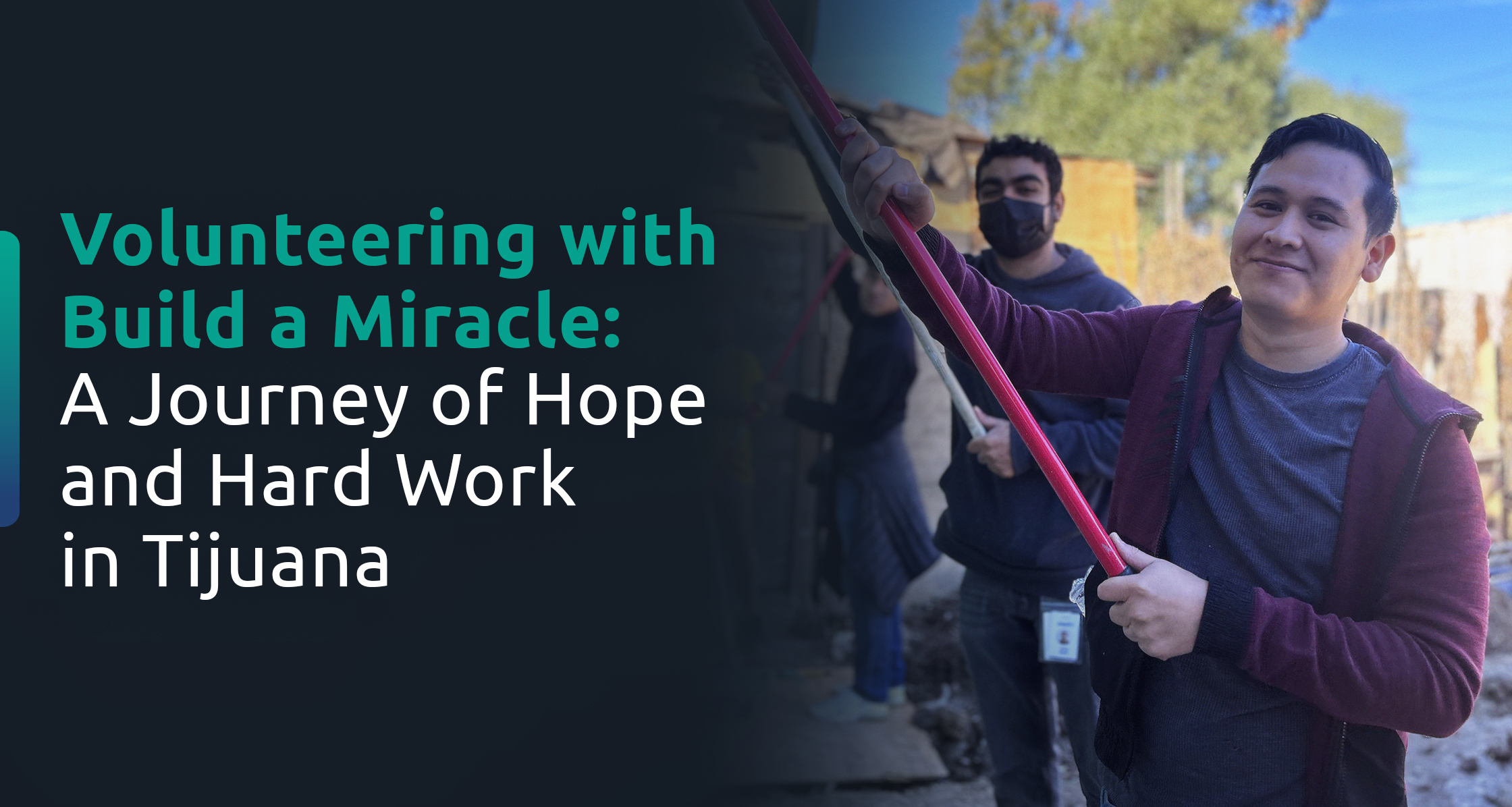Tijuana, December 9th, 2023 — In collaboration with Build a Miracle, a San Diego-based non-profit organization dedicated to constructing homes and advancing educational opportunities for underprivileged families in Tijuana, Mexico, we had the honor of participating in two transformative volunteer events. On November 11, 2023, our team convened at Centro Comunitario Florido IV, where we skillfully installed lath, insulation, and drywall. Following this, on December 9, 2023, we focused on adding final touches by painting walls, arranging furniture, and, most importantly, presenting the completed home to a deserving family, marking a milestone in their lives.
The Journey Begins
Our journey started with a shared vision to make a meaningful difference during the holiday season. As we packed our tools and supplies, there was a palpable sense of excitement and purpose among us. Arriving at the Community Center Florido IV in Tijuana, we were greeted by the warm smiles of the Build a Miracle team and the local community members. The atmosphere was one of hopeful anticipation.
Unity in Action
The construction site was a hive of activity, with volunteers from various backgrounds all working towards a common goal. It was heartwarming to see how language barriers and cultural differences melted away as we worked side-by-side, assembling the furniture, arranging the household items, and painting walls. The spirit of collaboration was truly in the air, reminding us that when we come together for a good cause, our differences become our strengths.
A Family’s Dream Realized
The highlight of our endeavor was meeting the family who would soon call our project their home. Their story was one of resilience and hope, having faced numerous challenges yet remaining steadfast in their optimism for a better future. Witnessing their joy and gratitude as they saw their new home taking shape was an indescribable feeling. It brought home the reality of the impact we were making.
A Home for Christmas
As Christmas approached, our efforts intensified. The excitement of delivering the house in time for the holidays added an extra layer of significance to our work. The family’s dream of having a safe, warm place to spend Christmas was the best gift we could have asked for. It was a powerful reminder of the true essence of the holiday season – giving, sharing, and spreading joy.
Reflections and Gratitude
As we reflect on our experience in Tijuana, we are filled with a deep sense of gratitude. We are thankful for the opportunity to work with Build a Miracle, an organization that tirelessly works to improve the lives of families in need. We are also grateful for the bonds we formed with each other and the community in Tijuana. This experience has taught us the value of service and the profound impact of collective efforts.
As we look ahead, we are inspired to continue making a difference, one day at a time. We encourage others to seek out opportunities to volunteer and contribute to their communities, especially during the holiday season. The experience of building a house in Tijuana was not just about constructing walls and roofs; it was about building hope, fostering community, and creating a space where dreams can flourish.
This holiday season, we were blessed to be a part of something truly special. We built more than just a house; we helped build a home. And in the process, we discovered that the greatest joy comes not from what we receive, but from what we give.
Join us in our journey of giving and building miracles. To learn more about Build a Miracle and how you can contribute, visit Build a Miracle’s website.
About ITJ
ITJ is devoted to serving fast-growing and high-value market sectors, particularly the Internet of Medical Things (IoMT), working with innovative medical device companies looking to improve people’s lives. With a unique BOT (build, operate, and transfer) model that sources only the best digital talent available, ITJ enables companies in the US to create technology centers of excellence in Mexico. For more information, visit www.itj.com.


